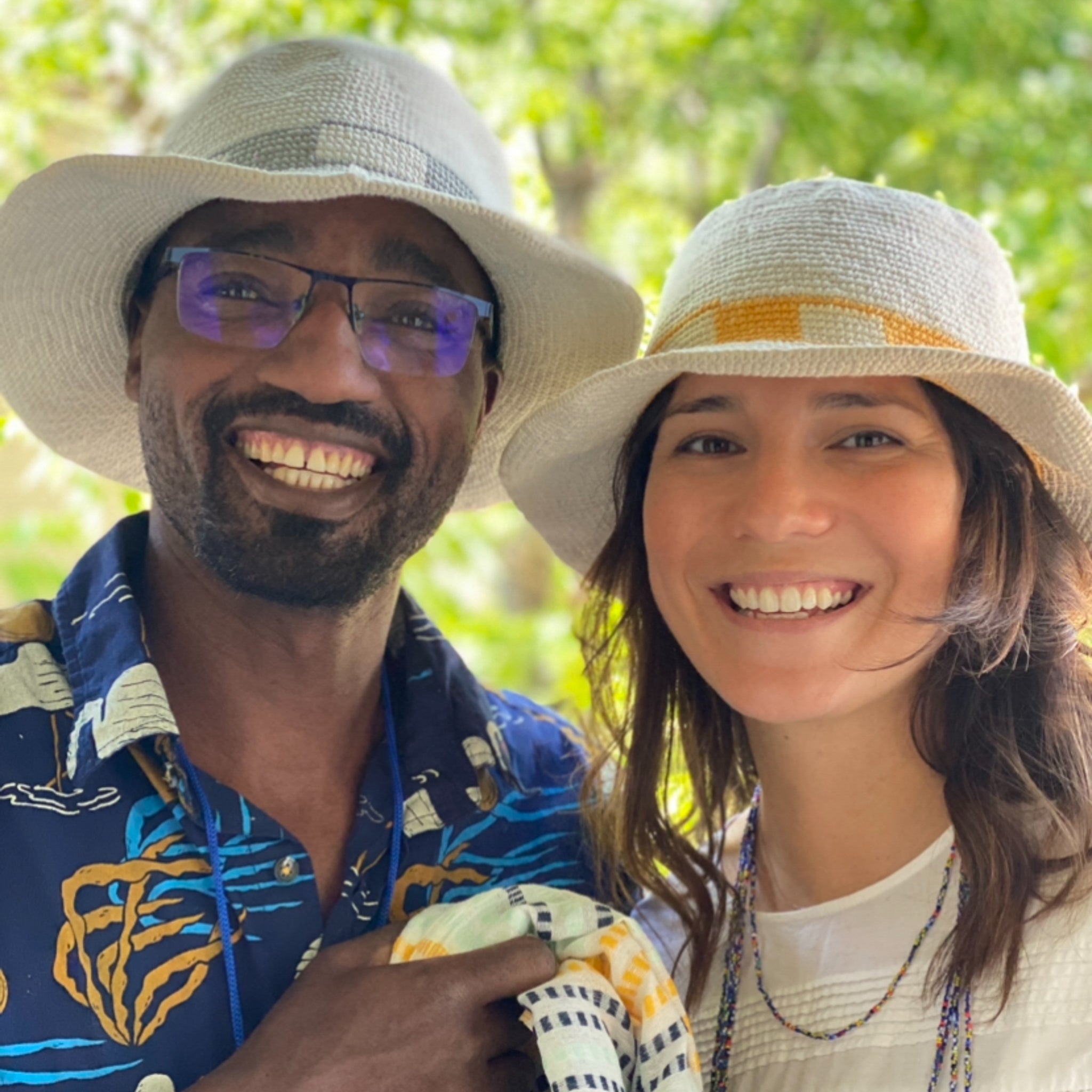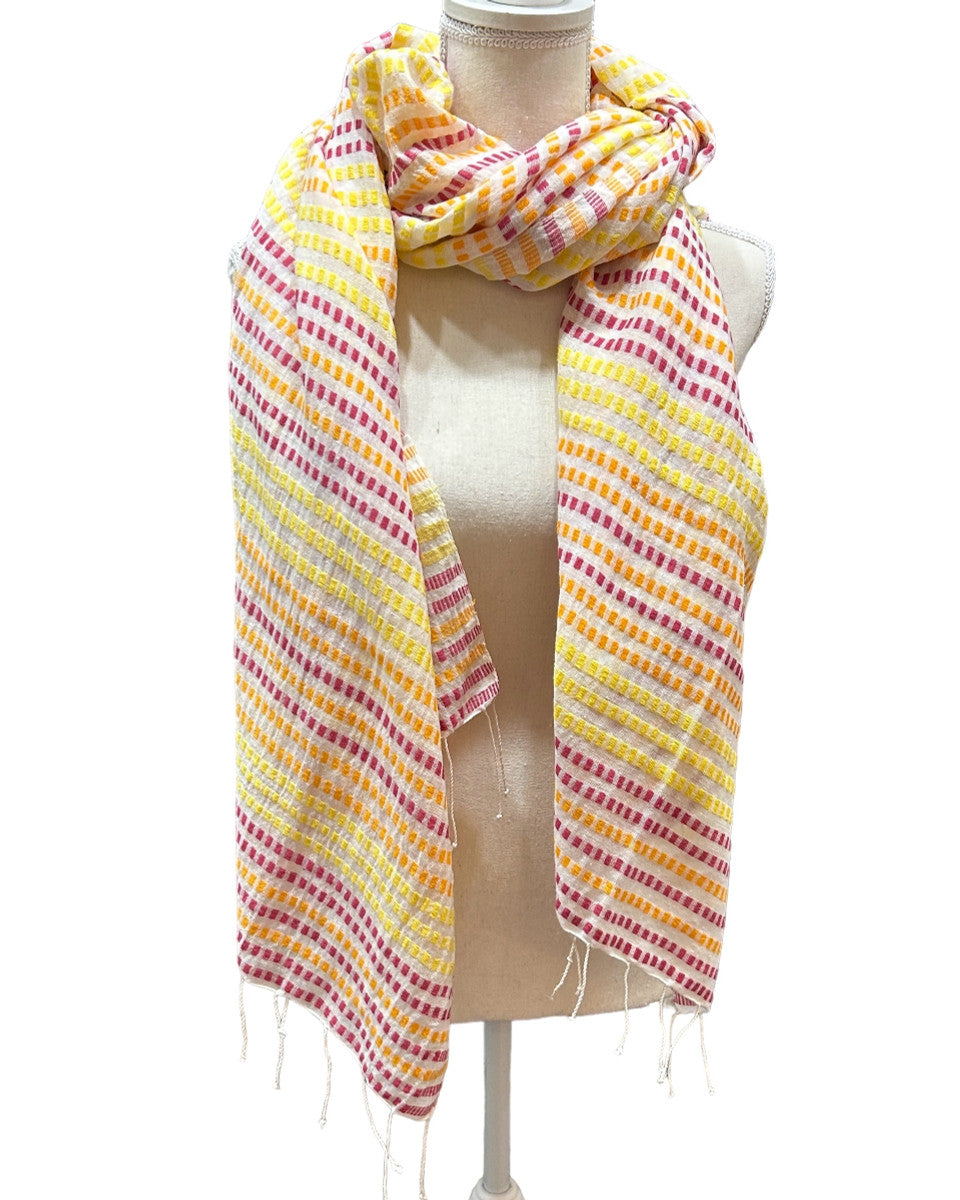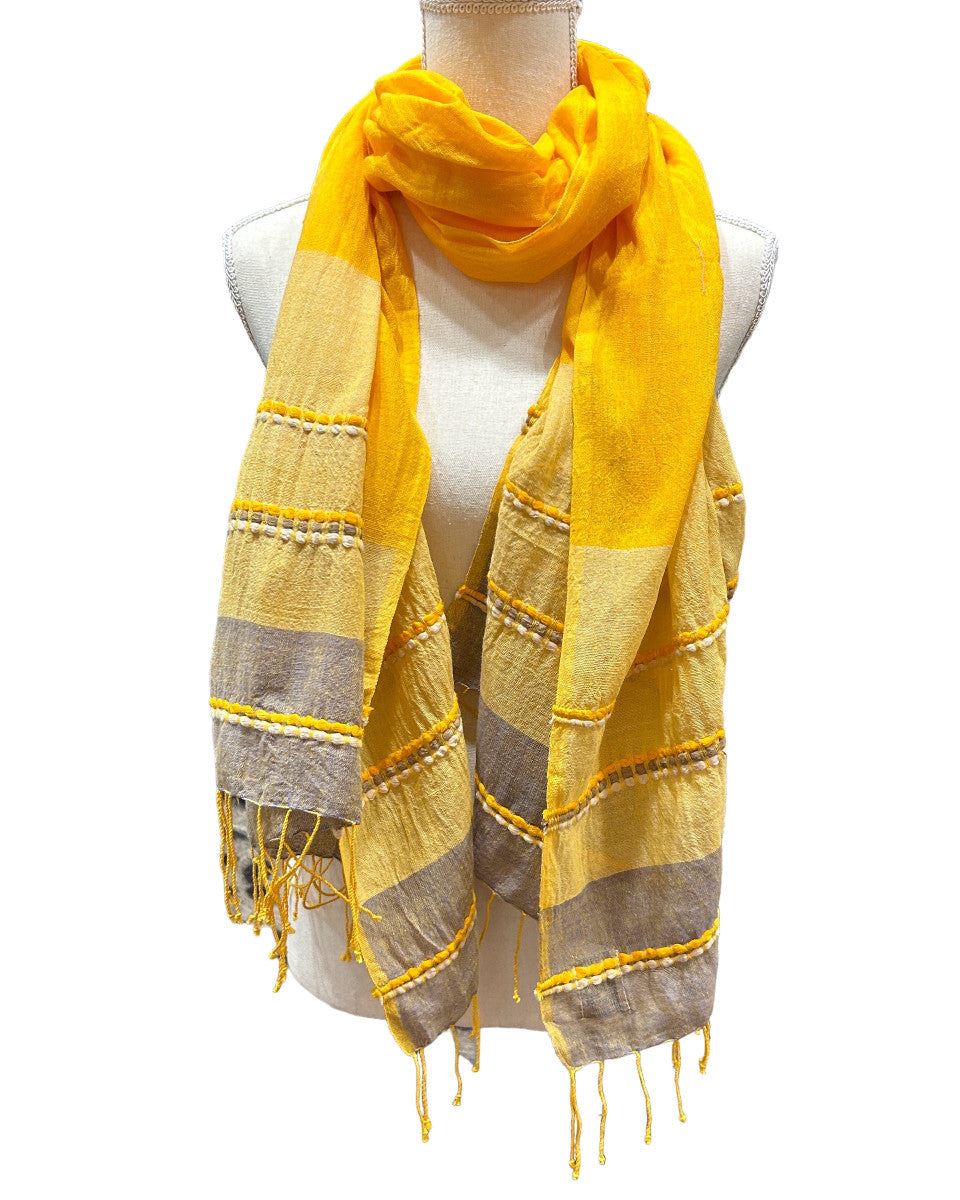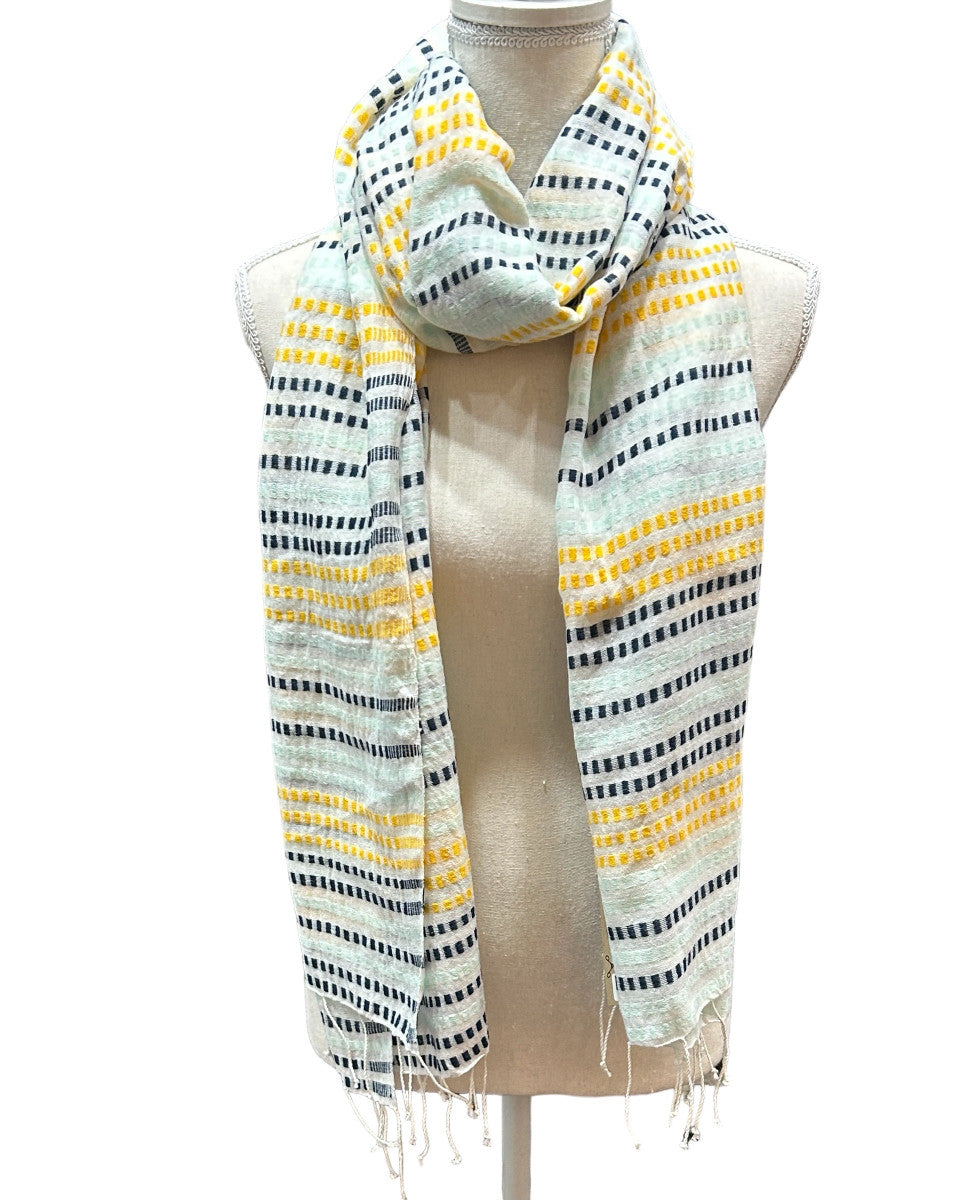During our trip to IFAM just a few weeks ago - we met our new friend Firew Konjo from the highlands of southwestern Ethiopia. This area, also known as the Gamo Highlands, is where we can find the Gamo people who are known to be some of the best weavers in all of Ethiopia.
We got to experience their beautiful work through colorful cotton scarves and hats that we were able to bring back with us.
Firew’s love for weaving started at a young age when he would assist his uncle, a master weaver in their community with his work. Seeing the decline of a 2000-year-old tradition of textile making and wanting to elevate the beautiful work of the region, Firew took action and started the Jano Handicraft Cooperative.
For centuries, Ethiopian communities have specialized in spinning cotton and weaving it into beautiful fabrics on a pit loom. This cooperative ensures that this tradition remains an artisanal, handmade process. Beginning with sourcing, they collect raw cotton from local farmers in the lowlands, strong bamboo for loom construction, and roots, barks, and grasses for natural dyeing. As for the weaving, they combine traditional techniques with modern design.
“Like weaving threads to create good fabric, we need to weave friendships to create a fair, cooperating society.” Firew Konjo
Firew shares that although weaving is typically passed down from father to son, and is a field dominated by men, this is something he is challenging by employing women through his cooperative and teaching them how to weave. Not only is his cooperative committed to women’s empowerment, but they are also empowering their community to participate in sustainable economies like weaving, instead of some of the more lucrative but extractive industries found in Ethiopia. This project is committed to zero waste, utilizing all fragments for the process.






